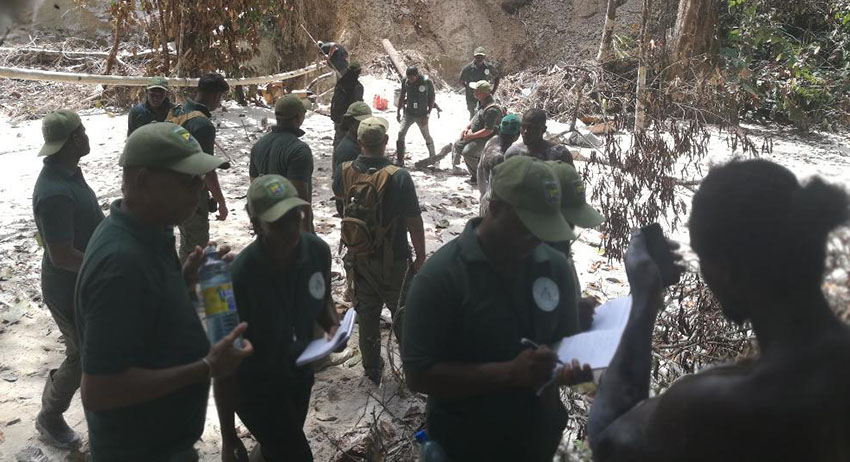Global sectoral pressures associated with raising the safe-mining bar in the gold extraction sector is focusing increasingly on the role of the Guyana Geology & Mines Commission’s (GGMC) Mining School, according to the Head of the institution John Applewhite-Hercules.
In an information-sharing session with the Stabroek Business earlier this week Applewhite-Hercules disclosed that the School had recently moved to step up training in Codes of Practice associated with the industry by undertaking training with the GGMC’s Corps of Wardens to support them in their primary mandate, that is, the curbing of further degradation of the environment through illegal and unsafe mining practices. The exercise, according to Applewhite-Hercules had sought, among other things, to expose wardens to field-based training with Quantum Geographic Information System (QGIS) software designed to enhance their capacity to capture and present data relating to mining practices in the sector.
Applewhite-Hercules explained that the intensification of such training had become increasingly necessary given the requirement of more closely monitoring the mining activities of artisanal and small scale miners who comprise more than 80 per cent of the sector and whose operations leave a much larger environmental footprint, arising out of their largely “hit or miss” approach which lacks the tools to properly quantify the likely presence of gold in any particular area. “Essentially, these miners are without any large repository of exploration data that can allow them to determine with any degree of certainty whether or not a plot of land can be mined economically.” He explained that having to work with these limitations can have an impact on the extent of the environmental damage deriving from their mining methods, hence the need for training.
Asked whether he believed that the training being undertaken by the Mining School was translating into a greater mindfulness of the importance of safety practices Applewhite-Hercules said that this year the GGMC had noted “a significant reduction” in the level of mining-related fatalities in what he described as some of the “hot spots” in the sector. “I believe that the training is kicking in,” Applewhite-Hercules told Stabroek Business.
The Mining School, meanwhile, is readying itself for the June 21-22 execution of a multi stakeholder symposium titled “Towards A Green Development Strategy: Ensuring Decent Work Environments for Artisanal and Small-Scale Miners” at the Cara Lodge Hotel in Georgetown. Applewhite-Hercules explained that the Symposium, which seeks “to further institutionalize the practical application of greening in the gold mining sector,” is in line with “Australia’s thrust of continued engagement with alumni and other stakeholders in their various localities on areas that are of particular relevance.” Applewhite-Hercules himself is the holder of a Master’s Degree in Mineral Resources at the University of Queensland.
At the Symposium, external sectoral experts on the mining sector as well as local functionaries and representatives of expatriate mining companies, including Troy Resources and First Bauxite will be making presentations on various themes including business models in the mining sector, prospecting, the social impact of mining, the role of women in the mining sector and low-cost alternatives to mercury use in the gold mining sector.





